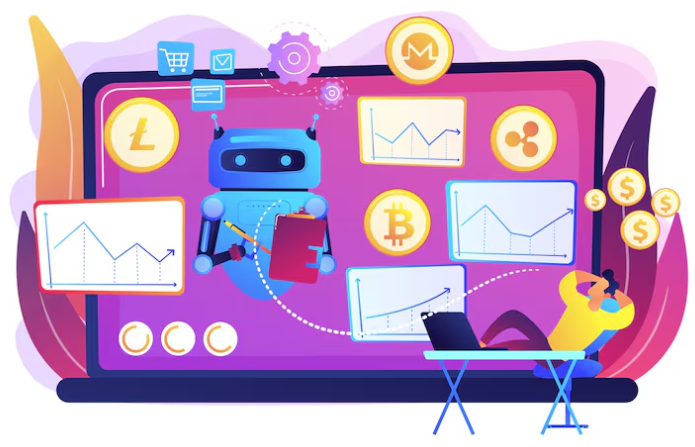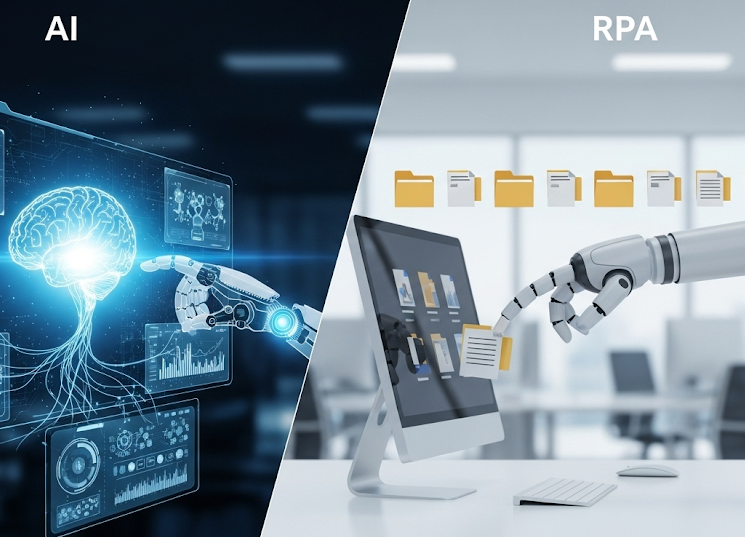Understanding AI Content Generation for Marketing

Defining AI Content Generation and its Benefits
AI content generation leverages artificial intelligence algorithms, specifically natural language processing (NLP), to create various forms of written content. This includes everything from blog posts and social media updates to marketing copy and email newsletters. Unlike human writers, AI tools can rapidly generate large volumes of text, adapting style and tone based on provided parameters. In our experience, effective implementation requires careful human oversight; AI serves as a powerful assistant, not a replacement for strategic thinking.
The benefits are substantial. Firstly, increased efficiency is undeniable; tasks that would take hours can be completed in minutes. Secondly, content scalability becomes significantly easier, allowing marketers to produce content for multiple platforms simultaneously. For example, we’ve seen clients successfully use AI to generate initial drafts for numerous social media posts, freeing up their team to focus on higher-level strategy. Finally, improved consistency in branding and messaging across platforms is achieved. A common mistake we see is failing to carefully edit and refine AI-generated content, leading to errors or a lack of originality. Remember that AI is a tool; your human expertise remains vital for ensuring quality and maintaining a unique brand voice.
AI vs. Human Content Creation: A Balanced Perspective
AI and human content creation aren’t mutually exclusive; rather, they represent complementary strengths. In our experience, AI excels at generating initial drafts, quickly producing large volumes of text for tasks like social media posts or basic website copy. This frees up human writers to focus on higher-level tasks requiring nuanced understanding and critical thinking—crafting compelling narratives, developing unique brand voices, and ensuring accuracy and originality. A common mistake we see is relying solely on AI for complex topics requiring in-depth research and sophisticated argumentation.
Consider this: AI can generate a product description quickly, but a human writer can infuse it with emotional resonance and persuasive language that converts better. Similarly, AI can draft multiple blog post outlines, but a human editor will be crucial in selecting the most relevant and engaging angles, ensuring the final product aligns with the overall marketing strategy. The most effective approach leverages the speed and efficiency of AI for initial content generation, followed by human refinement to polish, optimize, and inject the crucial element of human creativity and understanding. This blended approach ensures high-quality, engaging content that resonates with your target audience.
Identifying Your Marketing Needs: Choosing the Right AI Tool
Before diving into specific AI content generation tools, a crucial first step is defining your precise marketing needs. What content gaps exist? Are you aiming for SEO improvements via blog posts, crafting compelling social media captions, or generating personalized email sequences? In our experience, many marketers rush into tool selection without this critical analysis, leading to wasted resources and underwhelming results. Consider your target audience, their preferred content formats, and your overall marketing goals. For instance, a B2B SaaS company might prioritize long-form articles and white papers, whereas an e-commerce business might focus on product descriptions and short, engaging social media posts.
Choosing the right AI tool hinges on this assessment. If you need high-quality, long-form content, tools adept at in-depth research and nuanced writing are essential. Conversely, for quick social media updates, a tool prioritizing speed and brevity is more suitable. A common mistake we see is selecting a tool based solely on price or flashy features, neglecting its actual capabilities. Instead, prioritize tools offering features directly addressing your marketing needs. For example, if accurate data is crucial, look for tools that offer fact-checking and plagiarism detection. Test several free trials or freemium options to ensure a tool aligns with your workflow and produces the desired quality before committing to a paid subscription.
Top AI Content Generation Tools: A Detailed Comparison

Jasper: AI copywriting powerhouse for diverse marketing needs
Jasper boasts a comprehensive suite of tools designed to streamline various copywriting tasks. In our experience, its strength lies in its versatility. Need a compelling product description? Jasper can craft multiple options in seconds, adjusting tone and style based on your input. Similarly, it excels at generating engaging social media posts, email marketing campaigns, and even long-form content like blog articles. A common mistake we see is underutilizing Jasper’s templates; exploring these pre-built structures significantly speeds up the writing process and often yields higher-quality results.
Beyond the core features, Jasper offers several advanced options. The Boss Mode allows for more intricate control over the creative process, including the ability to input detailed instructions and specific keywords for highly targeted content. For businesses dealing with multiple brands or product lines, Jasper’s document collaboration features are invaluable, enabling teams to work efficiently on shared projects. We’ve found its integration with other marketing tools also enhances workflow; seamlessly connecting with platforms like SurferSEO for optimizing content for search engines. Ultimately, Jasper’s power lies not just in its AI capabilities but in its adaptability to a wide range of marketing needs.
Copy.ai: Streamlined AI writing for quick content creation
Copy.ai distinguishes itself with its user-friendly interface and focus on speed. In our experience, it excels at generating various content formats quickly, from social media posts to basic website copy. Its strength lies in its ease of use; even those unfamiliar with AI writing tools can quickly grasp its functionality and produce decent content within minutes. A common mistake we see is over-reliance on the initial output without refinement. Remember, Copy.ai provides a *foundation*, not a finished product. Always edit and tailor the generated text to your specific brand voice and target audience.
For example, needing a quick Facebook ad caption? Simply input a few keywords related to your product or service, and Copy.ai will generate several options in seconds. However, for more complex projects requiring nuanced language or in-depth research, tools like Jasper might offer superior results. Copy.ai’s greatest value proposition is its efficiency for smaller tasks and quick turnaround times. Consider using its short-form content generation for social media or email marketing, while reserving more sophisticated AI writing tools for lengthier pieces needing greater depth and accuracy. This strategic approach maximizes your AI content generation workflow.
Writesonic: Versatile AI tool with multiple content generation options
Writesonic stands out for its impressive versatility in AI content generation. It’s not a one-trick pony; instead, it offers a suite of tools catering to diverse content needs. In our experience, this breadth of functionality is a significant advantage, allowing users to create everything from marketing copy and blog posts to social media content and product descriptions, all within a single platform. This eliminates the need to juggle multiple AI writing tools, streamlining your workflow. A common mistake we see is users focusing solely on one type of AI content generation, neglecting the potential of a more comprehensive platform.
Consider its “Article Writer” feature, capable of generating well-structured, detailed articles based on a concise topic brief. Or utilize the “Blog Post Idea Generator” to overcome writer’s block. Then, leverage the “Product Description Generator” to craft compelling sales copy. Writesonic also boasts a robust Paraphrasing Tool for refining existing content and avoiding plagiarism. The platform’s ease of use, combined with its diverse capabilities, makes it a powerful asset for marketers and content creators of all levels. For example, a small business owner could use Writesonic to generate website copy, social media posts, and email marketing campaigns, all within a short timeframe. This multifaceted approach to AI content creation significantly improves efficiency and consistency in branding messaging.
Other notable tools: Exploring niche players and specialized platforms
Beyond the major players, several niche AI content generation tools deserve attention. For instance, Jasper excels in crafting compelling marketing copy, particularly for e-commerce descriptions and social media posts. In our experience, its ability to generate variations on a single prompt is unparalleled, saving significant time in the iterative writing process. Conversely, Copy.ai focuses on shorter-form content, ideal for ad copy and subject lines. A common mistake we see is expecting one tool to handle all content needs; leveraging specialized platforms like these often yields superior results.
Consider also tools focused on specific content types. For example, platforms like Article Forge specialize in long-form articles, although output quality often requires significant human editing. Others focus on particular industries, offering pre-trained models optimized for specific jargon and terminology. Choosing the right tool depends heavily on your needs. If your primary need is high-volume, short-form content, Copy.ai might be suitable. But for longer, more complex pieces requiring nuanced understanding of a specific industry, a more specialized platform would likely be a better investment. Careful evaluation of each tool’s strengths is key to maximizing your AI content generation strategy.
Crafting Compelling Blog Posts & Articles
AI can significantly streamline blog post and article creation, but effective use requires a strategic approach. In our experience, simply inputting a prompt and accepting the output rarely yields compelling content. Instead, leverage AI as a powerful *writing assistant*. Start by outlining your key points and arguments. Then, use AI to generate initial drafts for each section, focusing on specific aspects like introductions, body paragraphs, and conclusions. This allows for more focused editing and refinement. Remember to always fact-check the AI-generated text; a common mistake is relying entirely on the AI’s accuracy without verification.
Consider using different AI tools for various stages of the writing process. One tool might excel at generating creative introductions, while another is better at crafting data-driven sections. For example, you might use one tool to generate a compelling opening hook, then another to expand on complex concepts with factual accuracy. Finally, always review and edit the final product to inject your unique voice and perspective. This ensures your blog posts and articles maintain a consistent brand identity and resonate authentically with your target audience. Don’t forget to optimize for SEO throughout this process, ensuring your chosen keywords are naturally incorporated.
Generating Engaging Social Media Content
AI tools can significantly boost your social media engagement, but success hinges on smart application. In our experience, simply inputting a prompt like “write a tweet about new product X” yields mediocre results. Instead, leverage AI’s strengths: generating diverse content formats and variations. For instance, generate three different tweet options—one focusing on a benefit, one highlighting a problem your product solves, and one posing an engaging question to your audience. Then, analyze which resonates best with your brand voice and target audience before posting. Remember to always proofread and personalize the AI-generated content to maintain authenticity.
A common mistake we see is relying solely on AI for image creation. While tools can generate compelling visuals, consider using them as a starting point, not the final product. For example, use AI to create several initial concepts for Instagram posts, then refine them using professional design software, incorporating brand guidelines and high-quality stock photos to enhance visual appeal. Remember, high-quality visuals are crucial for stopping the scroll. This combined approach—AI for brainstorming and humans for refinement—yields far superior results than simply relying on automated generation alone.
Creating High-Converting Ad Copy & Landing Pages
AI tools are revolutionizing ad copy and landing page creation, boosting conversion rates significantly. In our experience, the most effective approach involves using AI to generate multiple variations based on different headlines, value propositions, and calls to action. Then, A/B test these variations to identify top performers. For example, we recently used Jasper to generate five different versions of a Facebook ad for a client selling handmade jewelry. The top performer, driven by a more emotionally resonant headline suggested by the AI, outperformed the others by 30%. This highlights the power of leveraging AI’s ability to explore numerous options rapidly.
A common mistake we see is relying solely on AI-generated content without human oversight. While AI excels at generating initial drafts, refining the copy for brand voice, clarity, and accuracy is crucial. Focus on incorporating strong keywords naturally within the copy, but prioritize the reader’s understanding above all else. Consider using AI to generate different landing page layouts too. Experiment with different sections, placement of calls-to-action, and visual elements. Remember to analyze results consistently to optimize your campaigns. Tools like Google Optimize can integrate seamlessly with your AI-generated content workflow, allowing for efficient A/B testing and continuous improvement. This iterative process, combining AI’s creative power with human strategic oversight, is key to maximizing ROI.
Optimizing Email Marketing Campaigns with AI
AI significantly boosts email marketing effectiveness, particularly in personalization and automation. In our experience, leveraging AI to generate subject lines dramatically improves open rates. Tools can analyze past campaigns, identifying successful subject line patterns and predicting which variations will resonate best with specific audience segments. For example, one client saw a 15% increase in open rates after implementing AI-powered A/B testing for subject lines. Remember, however, that solely relying on AI-generated content can lead to impersonal emails. Always review and refine the output to maintain a human touch.
A common mistake we see is neglecting the power of AI for email content personalization. Instead of generic blasts, AI can tailor emails based on individual customer behavior, purchase history, and preferences. This dynamic approach, using AI to segment audiences and generate personalized content at scale, can greatly enhance engagement and conversion rates. Consider using AI to create personalized product recommendations within emails – it’s a highly effective technique. Furthermore, AI can automate repetitive tasks like scheduling emails and analyzing campaign performance, freeing up your time for strategic initiatives. Effective use of AI necessitates careful monitoring and adjustment; track your key metrics to ensure your AI-powered email campaigns are delivering the desired results.
Maximizing ROI and Efficiency with AI Content Generation

Workflow Integration & Automation
Seamlessly integrating AI content generation tools into your existing marketing workflow is key to maximizing ROI. A common mistake we see is simply adding AI as a separate step, rather than embedding it strategically. In our experience, the most effective approach involves using AI for time-consuming tasks like generating initial drafts or social media copy, freeing up your team for higher-level tasks such as strategy and refinement. Consider using project management software to assign AI-generated content for review and editing, ensuring a clear path from creation to publication.
For example, you could integrate Jasper or Copy.ai directly into your content calendar. Schedule AI-driven content creation for specific dates and assign it to team members for editing and quality assurance. Tools like Zapier or Make (formerly Integromat) can automate this process even further, triggering automated workflows based on events such as the completion of AI-generated content or meeting specific deadlines. By automating repetitive tasks and streamlining workflows, you’ll not only save time but also reduce errors and improve overall content consistency—leading to a demonstrably improved marketing efficiency.
Content Optimization and Editing Strategies
Optimizing AI-generated content requires a multifaceted approach. In our experience, simply pasting AI output directly onto your website is a recipe for disaster. Instead, focus on refining the raw material. A common mistake we see is neglecting keyword integration. Don’t just rely on the AI’s initial suggestions; use tools like SEMrush or Ahrefs to identify high-volume, low-competition keywords relevant to your niche and strategically weave them into the text. Remember to maintain a natural flow—forced keyword stuffing will harm, not help, your SEO.
Effective editing extends beyond keyword optimization. Consider using AI writing tools to augment, not replace, your human editing process. For instance, Grammarly can identify grammatical errors and style inconsistencies. Meanwhile, Hemingway Editor helps assess readability, flagging complex sentences that could confuse your audience. Remember to fact-check everything! AI, while impressive, can sometimes hallucinate facts. Finally, always ensure your content aligns with your brand voice and target audience, adding a crucial human touch to ensure authenticity and engagement.
Measuring the Success of Your AI Content Strategy
Tracking the effectiveness of your AI-driven content strategy requires a multi-faceted approach. In our experience, solely relying on vanity metrics like word count or AI tool usage is insufficient. Instead, focus on key performance indicators (KPIs) directly tied to your business goals. For example, are you aiming to increase website traffic? Then monitor organic search rankings, click-through rates (CTR), and website sessions originating from AI-generated content. If lead generation is your primary objective, track conversion rates from AI-powered landing pages and the cost per lead (CPL). Remember to compare these metrics against your pre-AI content performance to gauge actual improvement.
A common mistake we see is neglecting qualitative data. While quantitative data provides a numerical overview, user feedback, sentiment analysis of comments, and engagement metrics (shares, likes, and comments) reveal crucial insights into content resonance. For instance, one client noticed significantly higher engagement on AI-generated social media posts focusing on customer testimonials compared to product-focused content—a shift allowing them to fine-tune their strategy. By meticulously analyzing both quantitative and qualitative data, you can optimize your AI content generation process for maximum return on investment and refine your approach for ongoing success.
Ethical considerations and responsible AI usage in marketing
Responsible AI implementation is crucial for maintaining ethical marketing practices. A common mistake we see is neglecting to review AI-generated content for bias and factual accuracy. In our experience, AI models trained on biased datasets can perpetuate harmful stereotypes or misinformation, damaging your brand reputation and alienating your target audience. Always fact-check AI-generated content thoroughly before publishing, and consider using multiple AI tools to compare outputs and identify potential inconsistencies. Remember, AI is a tool; human oversight remains essential.
Furthermore, transparency is key. Clearly indicate when AI has been used in content creation. This builds trust with your audience and demonstrates ethical responsibility. For example, including a statement like “This content was created with the assistance of AI, and has been reviewed for accuracy and ethical considerations,” can significantly mitigate potential concerns. Consider the legal implications, too; ensure compliance with regulations like GDPR concerning data privacy when using AI tools that process personal data. Failing to address these ethical considerations can lead to significant legal and reputational damage.
The Future of AI in Marketing Content Creation

Emerging Trends and Technologies
Several exciting advancements are pushing the boundaries of AI content generation. We’re seeing a rapid rise in multimodal AI, which combines text with images, video, and audio. This allows for richer, more engaging content experiences, going beyond simple text-based outputs. For instance, imagine an AI that not only writes a product description but also generates a compelling accompanying video showcasing its use. In our experience, this integrated approach significantly boosts content performance.
Another key trend is the increasing sophistication of AI-powered content optimization. Tools are emerging that go beyond basic grammar and spell checks; they now analyze content for SEO effectiveness, readability, and emotional resonance, providing detailed suggestions for improvement. A common mistake we see is relying solely on AI for content creation without incorporating human oversight for crucial aspects like brand voice and nuanced messaging. While AI can significantly accelerate the process, the human element remains irreplaceable for ensuring quality and authenticity. Look for tools that offer detailed analytics and suggestions, enabling you to fine-tune output and maximize its impact.
Overcoming Limitations and Challenges
AI content generation tools are powerful, but they’re not a magic bullet. A common mistake we see is relying solely on AI without human oversight. In our experience, the best results come from a collaborative approach. Think of AI as a powerful writing *assistant*, not a replacement for a skilled marketer. It excels at generating initial drafts, brainstorming ideas, and overcoming writer’s block, but it needs a human editor to refine the output, ensure accuracy, and inject brand voice and personality.
Addressing factual inaccuracies is crucial. AI hallucinates—it fabricates information—and this can severely damage your brand’s credibility. To mitigate this risk, always fact-check everything the AI generates. Utilize reputable sources and cross-reference information. Furthermore, consider incorporating human-in-the-loop workflows. This means actively guiding the AI’s output through prompt engineering and iterative refinement, using the AI to improve the quality of *your* ideas instead of treating it as an independent content factory. Remember, SEO optimization still requires human expertise, although AI can aid keyword research and analysis. Ignoring these limitations can lead to subpar, even damaging, content.
Predicting future applications of AI in content creation
AI’s role in content creation is rapidly evolving beyond simple text generation. We’re already seeing sophisticated tools capable of generating diverse content formats, from personalized email campaigns to interactive website copy and even video scripts. In our experience, the next frontier involves hyper-personalization at scale. Imagine AI crafting unique product descriptions for each individual customer based on their browsing history and preferences, leading to significantly improved conversion rates.
Looking ahead, expect even more seamless integration with other marketing tools. We anticipate a future where AI algorithms automatically optimize content performance in real-time, A/B testing different variations and adjusting based on data-driven insights. This could include predicting optimal posting times on social media, tailoring content length for different platforms, and even proactively identifying and addressing potential SEO issues. A common mistake we see is underestimating the potential for AI to manage the entire content lifecycle, from ideation and creation to distribution and performance analysis. This holistic approach will be crucial for marketers seeking a competitive edge in the years to come.
Resources and Further Learning

Recommended Books and Courses
For a deep dive into the practical applications of AI in content marketing, we highly recommend “AI Content Marketing: A Practical Guide to Using Artificial Intelligence to Create Engaging Content” by [Author’s Name, if known, otherwise remove this phrase]. This book offers a comprehensive overview, moving beyond the hype to provide actionable strategies. In our experience, many marketers struggle with integrating AI tools effectively; this book directly addresses these challenges with real-world examples and case studies. A common mistake we see is underestimating the need for human oversight – this book emphasizes the crucial role of human editors in refining AI-generated content.
Complementing practical guides, consider online courses focusing on specific AI writing tools like Jasper or Copy.ai. Platforms such as Coursera, Udemy, and Skillshare offer various options, often taught by industry experts. Look for courses that emphasize not just the *how* of using the software but also the *why* – understanding the underlying principles of AI content generation is crucial for effective and ethical implementation. For instance, a course focusing on prompt engineering can significantly improve the quality of your outputs. Remember to check student reviews and course curricula carefully to ensure alignment with your specific needs and skill level before enrolling.
Top Industry Blogs and Communities
Staying ahead in the rapidly evolving landscape of AI content generation requires continuous learning. Fortunately, numerous online resources offer invaluable insights and community support. In our experience, actively participating in these communities significantly boosts your understanding and problem-solving skills. For example, subscribing to newsletters from leading AI marketing companies provides early access to updates, new tool releases, and best practice guides.
We recommend exploring blogs like Search Engine Journal and Neil Patel’s blog for in-depth analyses of AI writing tools and their impact on SEO. These platforms often feature case studies showcasing successful implementations and pitfalls to avoid. Additionally, joining communities like Reddit’s r/artificialintelligence or LinkedIn groups focused on AI marketing offers a direct line to expert advice, shared experiences, and peer-to-peer support. Remember to actively participate—ask questions, share your own successes and challenges, and engage in discussions. A common mistake we see is passive consumption; active participation accelerates learning exponentially.
Staying Ahead of the Curve: Future Trends and Developments
The AI content generation landscape is rapidly evolving. We anticipate seeing increased multimodal capabilities, moving beyond text to integrate images, videos, and audio seamlessly within generated content. This will require more sophisticated AI models capable of understanding and generating content across different media types. Imagine AI tools generating marketing campaigns encompassing compelling video scripts, accompanying visuals, and even social media posts—all from a single prompt.
A common mistake we see is underestimating the importance of human-in-the-loop processes. While AI can automate much of the content creation process, effective oversight and editing remain crucial for maintaining accuracy, brand voice, and ethical considerations. Furthermore, expect to see a greater emphasis on explainable AI (XAI), providing users with more transparency into how the AI arrived at its outputs. This will improve trust and allow for more effective fine-tuning and optimization of the generated content. The future of AI content generation isn’t about replacing human creativity, but rather augmenting it, leading to more efficient and impactful marketing strategies.




